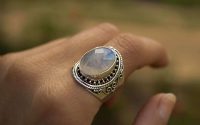What Is Money Made Of [Completed Guide]
You may have heard that money is made of paper, but that’s not entirely true. In this article, we’ll take a closer look at what currency is made of- and it might surprise you.
Paper cash is made of a blend of cotton and linen, which gives it durability and allows it to be printed. But that’s not the only thing that makes up money- metal coins also contain a variety of metals, including copper, nickel, and zinc.
This mixture of materials has a long and complicated history, dating back to ancient times. In this article, we’ll explore the secret history of coinage and take a closer look at what makes it so special.
What Is Money?
Ah, currency. The root of all evil, or the key to all success? It’s hard to say, but one thing’s for sure: money is a mystery. Have you ever stopped to think about what it’s made of? If you have, you’re in for a treat because today we’re going to explore the secret history of coinage and find out what it’s made of.
So, what is currency? The Merriam-Webster dictionary defines it as “a medium of exchange that functions as a unit of value.” In other words, it’s something that we use to buy things.
But what does that mean? I mean, sure, we use the money to buy things, but what is it made of? What gives it value?
Traditionally, money has been made out of things like gold and silver. These metals are valuable because they’re rare and easy to transport and store. But nowadays, most currency is made out of paper or plastic. So what gives paper currency its value?
A Brief History of Money
You might not know this, but money hasn’t always been made of paper. In fact, there’s a whole secret history of coinage that most people don’t know about.
So what is money made of? Well, it depends on the period and place. For example, in Ancient Greece, coin was made of iron. In China, during the Tang Dynasty, coin was made of bronze. And in medieval Europe, coin was often made of gold or silver.
Nowadays, paper currency is made of a special blend of 25% linen and 75% cotton. And on the back of every bill, there’s an image printed using a special process called intaglio.
The word intaglio comes from the Italian word for “incised.” And what this printing process does is creates a raised surface on the bill. If you run your finger over a bill, you can feel those raised lines.
What Is Money Made Of?
You might be surprised to know that money is made of a variety of materials, including paper, metal, and even plastic.
Paper money is made of a special paper infused with Pulpwood fibers, making it more durable than regular paper. For example, the United States’ five-dollar bill can be folded over 4,000 times before it will tear.
Metal coins are made of an alloy, which is a combination of two or more metals. The U.S. penny, for example, is made of zinc and copper. And the U.S. nickel is made of 75% copper and 25% nickel.
Some countries have started using plastic currency, which is made from a polymer called polypropylene. This type of currency is more durable than paper money and can even be washed in the washing machine without falling apart!
1. The Development of Fiat Currency
The next big development in the history of coinage came with fiat currency. Fiat currency is money not backed by a physical commodity but rather by the government that issues it.
So what does that mean, exactly?
Well, fiat currency is based on faith—the faith that the government will continue to exist and be able to pay its debts. And because of this faith, people are willing to accept fiat currency in exchange for goods and services.
Fiat currency was a major step forward because money could be created without having to find and mine precious metals. And while fiat currency isn’t without its problems—after all, governments can go bankrupt, too—it’s still in use worldwide today.
2. Money in the Digital Age
With all this talk of paper money, you might be wondering, what about digital currency?
Well, that’s a whole other can of worms. When you have a physical bill, there’s a definitive number of them. But when it comes to digital currency, there’s no limit to how much can be created. So, what is digital money backed by?
In the past, coinage was backed by physical commodities like gold or silver. But today, most money is fiatMoney, which means it’s not backed by anything physical. Instead, fiat cash is backed by the government that issued it.
And what does that mean for you? Well, it means that if the government becomes unstable or collapses, the value of your money could plummet.
3. The Future of Money
What will the money be made of in the future? Will we even use money at all?
Some people believe that money will eventually be replaced by cryptocurrency. Cryptocurrency is a digital or virtual currency that uses cryptography for security. Transactions are verified by network nodes through cryptography and recorded in a dispersed public ledger called a blockchain. Bitcoin, the first and most well-known cryptocurrency, was created in 2009.
Others believe we will move towards a cashless society where all transactions are done electronically. This is already happening to some extent, with more and more people using apps like Venmo and PayPal to send cash to friends and family.
What do you think? Only time will tell what the future of currency holds.
Conclusion
What is money made of? It’s a question that’s been asked for centuries, and it’s one that still doesn’t have a clear answer.
There are a lot of theories out there, but the truth is that no one knows for sure. What we know is that currency is made up of many different things, including commoditymoney, fiat money, and even cryptocurrency.
So, the next time someone asks you what coinage is made of, you can give them a little history lesson. Who knows, maybe you’ll even be able to help them understand it a little better!


